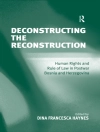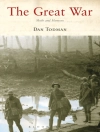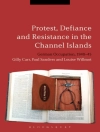More than a quarter of a century after the last Marine Corps Huey left the American embassy in Saigon, the lessons and legacies of the most divisive war in twentieth-century American history are as hotly debated as ever. Why did successive administrations choose little-known Vietnam as the ‘test case’ of American commitment in the fight against communism? Why were the ‘best and brightest’ apparently blind to the illegitimacy of the state of South Vietnam? Would Kennedy have pulled out had he lived? And what lessons regarding American foreign policy emerged from the war?
The Columbia Guide to the Vietnam War helps readers understand this tragic and complex conflict. The book contains both interpretive information and a wealth of facts in easy-to-find form. Part I provides a lucid narrative overview of contested issues and interpretations in Vietnam scholarship. Part II is a mini-encyclopedia with descriptions and analysis of individuals, events, groups, and military operations. Arranged alphabetically, this section enables readers to look up isolated facts and specialized terms. Part III is a chronology of key events. Part IV is an annotated guide to resources, including films, documentaries, CD-ROMs, and reliable Web sites. Part V contains excerpts from historical documents and statistical data.
Tabla de materias
Introduction
List of Abbreviations
Part I: Historical Narrative
1. Studying the Vietnam War
2. Vietnam: Historical Background
Roots of the Vietnamese Culture and State
The Impact of French Colonialism
The Rise of Vietnamese Nationalism
The Origins of Vietnamese Communism
3. United States: Historical Background
Idealism and Realism in U.S. Foreign Relations
The United States and the Open Door in Asia
The World Wars: The Legacies of Wilson and Munich
The Origins of the Cold War
4. The French War in Vietnam
The August Revolution
Outbreak of the Franco-Vietminh War
U.S. Support of France
Dienbienphu and the Geneva Conference
5. The Diem Years: Eisenhower
The Decision to Back Ngo Dinh Diem
The Non-election of 1956
The Illusion of Nation Building
NLF: Rise of the Southern Insurgency
6. The Diem Years: Kennedy
Counterinsurgency Warfare
The Buddhist Crisis
The Diem Assassination
What if Kennedy Had Lived?
7. The American War in Vietnam: Escalation
The Gulf of Tonkin Incident
Rolling Thunder
Johnson Decides on a Land War in Asia
Theories of Causation
8. The American War in Vietnam: Strategy
The Draft
Attrition Strategy and Body Count
Humpin’ It: The American Soldier
The Air War
Diplomacy
The Resilient Enemy
9. The American War in Vietnam: The Limits of Power
The Tet offensive
The Antiwar Movement and the Media
Johnson’s Decision to Stop Escalation
The Presidential Election of 1968
10. The American War in Vietnam: De-escalation
Vietnamization and More Bombing
Cambodia and Kent State
Negotiations and the Paris Peace Accords
DRV Victory in 1975
11. The War What Will Not Go Away
The Postwar Wars in Southeast Asia
American Vietnam Veterans
Films, Fiction, and Poetry
Postmortems
Part II: The Vietnam War from A to Z
Part III: Chronology
Part IV: Resource Guide
1. General Works
2. History of Southeast Asia and U.S. Foreign Relations
3. The Diem Years
4. North Vietnam and the Vietcong
5. Escalation of the American War
6. The American Way of War
7. The Limits of American Power
8. The End of the American War
9. The Legacy of the Vietnam War
10. Films and Documentaries
11. Electronic Resources
Part V: Appendices
Appendix 1. Documents
Appendix 2. Statistics
Index
Sobre el autor
David L. Anderson is professor of history and interim dean of arts and sciences at the University of Indianapolis. He is the author of
Facing My Lai: Moving Beyond the Massacre and
Trapped by Success: The Eisenhower Administration and Vietnam, 1953–1961.












